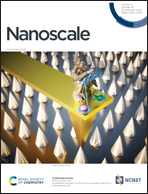Ultrafast Auger process in few-layer PtSe2†
Abstract
Enhanced many-body interactions due to strong Coulomb interactions and quantum confinement are one of the most prominent features of two-dimensional systems. The Auger process is a representative many-body interaction typically observed in two-dimensional semiconductors, determining important physical properties of materials, such as carrier lifetime, photoconductivity, and emission quantum yield. Recently, platinum dichalcogenides, represented by PtSe2 and PtS2, have attracted great attention due to their superior air stability, thickness-dependent semimetal-to-semiconductor transition, and exotic magnetic characteristics. However, the Auger process in platinum dichalcogenides has not been investigated to date. Here, we utilized ultrafast optical-pump terahertz-probe spectroscopy to explore carrier dynamics in few-layer semiconducting PtSe2. Most of the excited carriers are trapped by defects within ∼10 ps after excitation due to high defect density. We overcome this challenge by raising the excitation intensity to saturate trap sites with carriers, and observed a many-body process involving the carriers that survived the rapid trapping. This process is not band-to-band Auger recombination, but rather defect-assisted Auger recombination in which free carriers interact with trapped carriers at defects. Theoretical simulations show that this three-body Auger process can be approximated as bimolecular recombination at the rate of ∼3.3 × 10−3 cm2 s−1. This work provides insights into the interplay between ultrafast many-body processes and defects in two-dimensional semiconductors.



 Please wait while we load your content...
Please wait while we load your content...